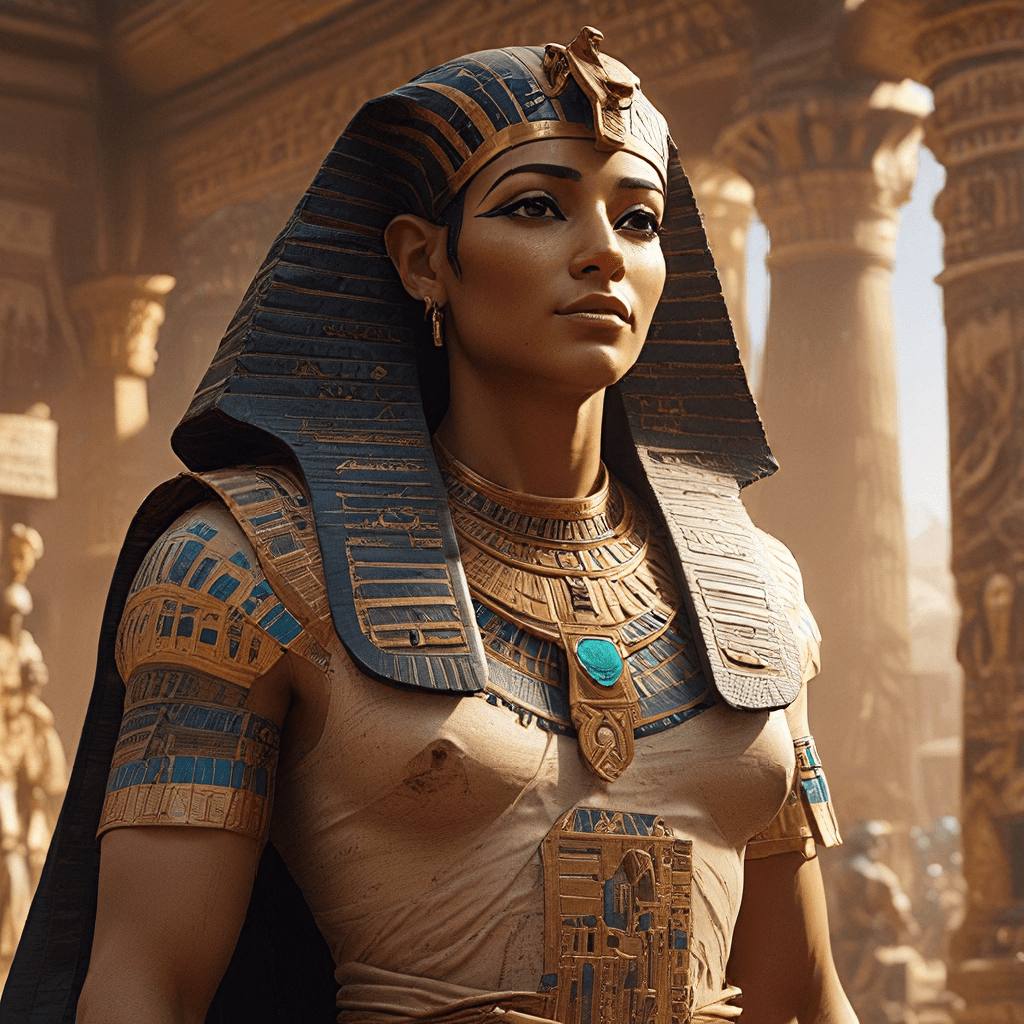The Egyptian Afterlife: A Comprehensive Guide
I. Introduction: Unveiling the Mysteries of the Afterlife
Ancient Egyptians believed strongly in an afterlife, seeing it as a continuation of life, not an end. Their lives revolved around ensuring a smooth journey to the afterlife. They meticulously prepared for their final moments with elaborate rituals and offerings to appease the gods and guarantee their safe passage to the next world. Their beliefs and practices are reflected in the magnificent pyramids, elaborate tombs, and intricate artwork that have survived to this day. Understanding these rituals and beliefs offers an invaluable window into the profound spirituality and cultural richness of ancient Egyptian civilization.
II. The Journey to the Afterlife: Stages and Trials
The Egyptian concept of death was a journey, not an ending. This journey was a complex process of transformation, beginning with the moment of death and culminating in the afterlife. The soul, believed to be made up of the ka and ba, separated from the body upon death. The ka, a vital force and double, stayed with the body. The ba, the soul, embarked on the journey to the afterlife.
The first stage was the Weighing of the Heart ceremony. Anubis, the jackal-headed god of the dead, weighed the deceased’s heart against a feather representing truth and justice. Thoth, the god of knowledge, recorded the outcome. If the heart was found lighter than the feather, it meant the person had lived a righteous life and was allowed to enter the afterlife. However, if the heart weighed heavier, it was devoured by the monster Ammit, a symbol of chaos and destruction, and the soul was denied entry.
Passing this judgment, the soul faced Osiris, the king of the underworld, and his divine court. If the soul had been judged worthy of the afterlife, it would be guided by the god Horus, son of Osiris, through the underworld, navigating the treacherous passages and trials to reach the Fields of Iaru.
III. The Underworld: Domains of the Dead
The Egyptian afterlife was not a simple paradise. It was a complex realm with distinct domains, each representing different aspects of the soul’s journey. The Halls of Amenti, ruled by Osiris, was the heart of the underworld, where the deceased were judged and received their eternal fate. The Fields of Iaru, a paradise of eternal abundance, was the ultimate reward for a righteous life. It was a land overflowing with food, water, and fertility. The Duat, a perilous path through darkness and light, was a symbolic journey through the underworld, representing the challenges and trials of the soul.
The Lake of Fire was a crucial barrier to the afterlife, guarded by the serpent goddess Apep. This symbolic lake represented the final test of purification, separating the righteous from the wicked. Only those who had successfully navigated the journey and were judged worthy could cross the Lake of Fire and enter the Fields of Iaru.
IV. The Role of the Gods and Goddesses
A host of gods and goddesses played significant roles in the Egyptian afterlife. Osiris, the lord of the underworld, judged the souls and ruled over the realm of the dead. Anubis, the guardian of the dead, weighed the hearts, ensuring justice was upheld in the afterlife. Thoth, the scribe of the gods, recorded the outcome of the judgment, ensuring that every soul received a fair verdict. Isis, the goddess of magic and motherhood, played a key role in the resurrection and renewal of souls. Horus, the god of kingship and vengeance, guided the righteous souls through the underworld and ensured their safe passage to the afterlife.
V. The Importance of Rituals and Offerings
Ancient Egyptians believed that meticulous preparation was crucial for a successful journey to the afterlife. This included the process of mummification, preserving the body so the ka could remain with it. Funerary masks, representing the deceased, were placed on their faces, and amulets were buried with them to provide protection and guidance in the afterlife. The tombs were adorned with elaborate paintings and carvings depicting scenes from the afterlife, offering the deceased solace and comfort. Tombs were filled with offerings of food, clothing, and treasures, ensuring the deceased had everything they needed in their eternal life. Pyramids and temples, built as monuments to the pharaohs, served as gateways to the afterlife, ensuring their royal power extended beyond this life into the next.
VI. The Concept of the Ka and Ba: Elements of the Soul
The Egyptian afterlife was intimately linked to the concept of the ka and ba, the two elements of the soul. The ka, a vital force and double, remained with the body. It was considered the embodiment of the individual’s life essence, their personality, and their potential. The ba, the soul, was a spiritual entity that could leave the body and travel between worlds. It was the aspect of the soul that could interact with the gods and navigate the underworld.
The ka and ba were essential for a successful afterlife. The ka ensured the body’s survival and preserved the deceased’s identity. The ba, through its journey to the afterlife, experienced the trials and tribulations, ultimately reaching its final destination. The union of the ka and ba in the afterlife ensured the deceased’s continued existence and their eternal life in the Fields of Iaru.




